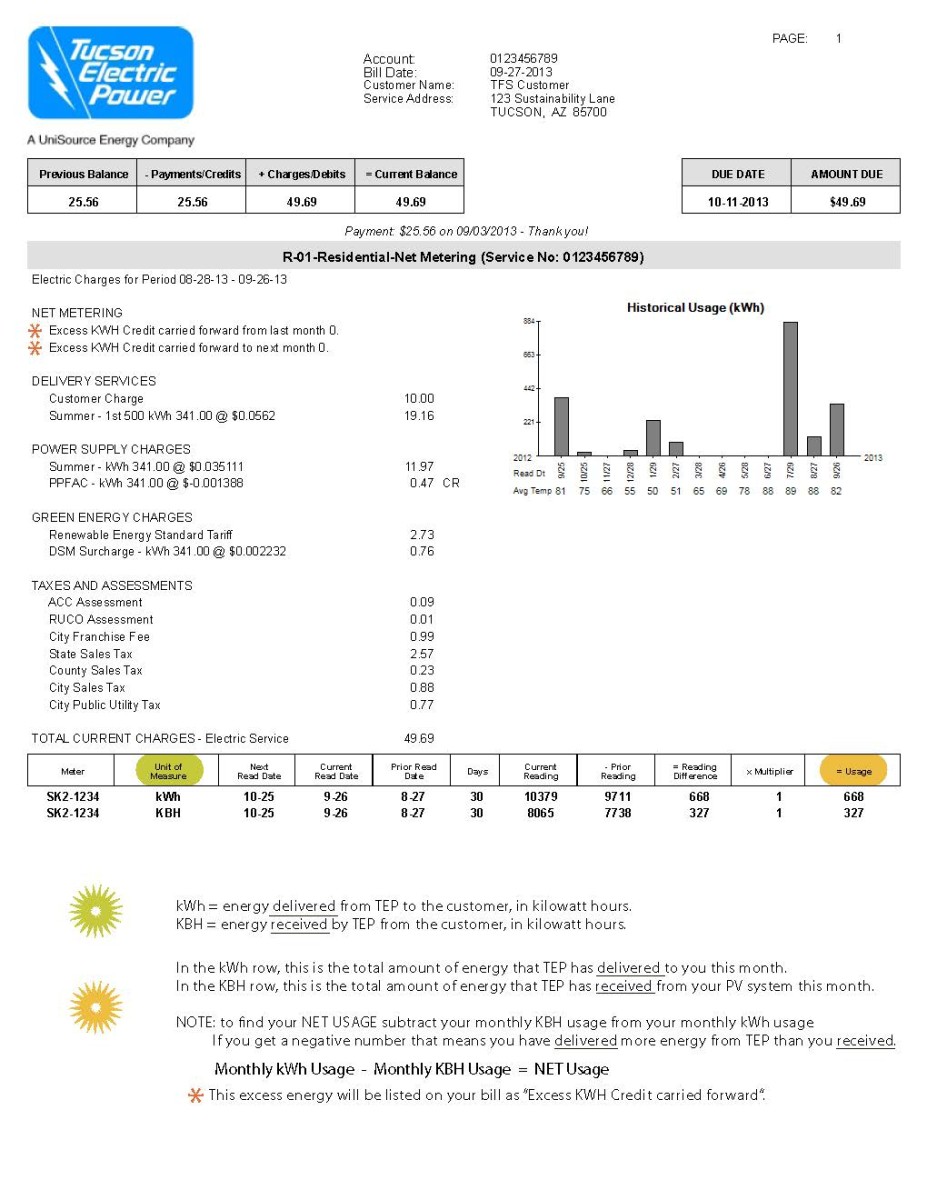One of the exciting aspects of going solar is that your home becomes its own mini power plant. When you make the switch to solar electricity (PV), your utility company will switch out your current meter with a NET meter. The NET meter keeps track of the amount of energy your PV system sends back to the grid, as well any extra energy your home pulls from the grid to meet your home’s additional electricity needs. This is known as “Net Metering” and it allows you to get the full benefits of your solar electric system. There will be times of the year (e.g. during the spring) when your solar electric system is pumping out more energy than your home is using. When this happens, the excess energy is sent back to the utility grid, and the utility company gives you a credit for the electricity it received.
For those times of the year, when your solar electricity system may not cover all of your energy needs (e.g. during the winter when there are shorter days, or when it’s cloudy for several days in a row), you will pull additional electricity from the utility grid. You don’t have to switch anything on or keep track of anything. No extra steps need to be taken on your part. This electricity you’re using from the grid is sent to your home exactly like it was prior to you installing solar. You will never notice a difference between electricity produced by your solar panels or utility-produced electricity.
At the end of the monthly billing cycle the utility company will check your meter to determine how much you owe (or don’t owe) them. Throughout the month the NET meter has recorded the amount of excess energy you’ve sent back to the grid and how much energy you have pulled from the grid. If you sent more electricity back to the utility grid than you have received, a credit will appear on your bill that will be applied to your next month’s electricity usage. On the other hand, if you have pulled more electricity from the grid that you have sent back to it, you will owe the utility for the electricity that you used.
Now that you understand the concept of net metering, you still may be wondering why you wouldn’t want to install a system that provides more electricity than you need. After all, you can make money on the excess electricity that you send back to the grid, right? Unfortunately, in Arizona it doesn’t work quite like that.
Once a year at the end of the October billing cycle, TEP will give you a final credit for the balance of any excess energy you sent back to the grid. Although, it’s nice to receive this credit, it’s not exactly ‘apples to apples’. The utility company pays you wholesale (about 3-4 cents per kWh) for your electricity even though you paid retail prices (about 8-10 cents per kWh) for the electricity when you used it. The result is a very small credit that will not increase your return on investment faster than simply sizing your system to meet your household’s energy needs. An appropriately sized system is the best way to get the full financial benefits from your PV system, and the best return on investment.

